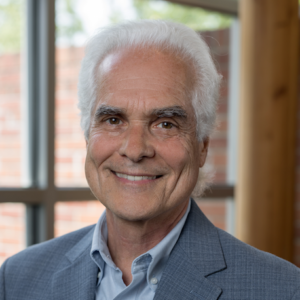Dr. Redwood earned his BA in English at the State University of New York at Buffalo and his doctor of chiropractic degree from Palmer College of Chiropractic. Dr. Redwood practiced chiropractic with an emphasis on nutrition and acupuncture for 25 years in Virginia and Washington, D.C., prior to becoming a professor at Cleveland Chiropractic College – Kansas City, where he supervised student interns and taught chiropractic principles and practice to entry-level students and clinical nutrition to senior students. He was named Educator of the Year by the Missouri State Chiropractic Association and was a six-time winner of the Virginia Chiropractic Association’s Literary Award.
Redwood’s first chiropractic textbook, Contemporary Chiropractic, was published by Churchill Livingstone in 1997 and his second, Fundamentals of Chiropractic, was published by Mosby in 2003. He has authored many textbook chapters including the chapter on nutrition for Hawk and Evans’ Health Promotion and Wellness: An Evidence-Based Guide to Clinical Prevention Services (Springer, 2012); the chapters on chiropractic in all editions of Micozzi’s Fundamentals of Complementary and Alternative Medicine (Elsevier, 1996-2015); Weintraub’s Complementary and Integrative Medicine in Pain Management (Springer, 2008), and Coughlin’s Principles and Practice of Manual Therapeutics (Churchill Livingstone, 2002).
Dr. Redwood was the first chiropractor invited to be a guest lecturer at the National Institutes of Health and the National Museum of Health and Medicine. He has lectured on chiropractic at the Medical College of Virginia and Eastern Virginia Medical School. Redwood was a founding editor of The Journal of Alternative and Complementary Medicine where he served for many years as book review editor. He is currently an associate editor of Topics in Integrative Healthcare and a member of the editorial board of the American Chiropractic Association. He been a reviewer and presenter for chiropractic’s Research Agenda Conference (RAC) and has consulted and written for WebMD, Direct Medical Knowledge and the Integrative Medicine Consult.
What made you to decide to come to UWS?
UWS is one of the leading integrated health care institutions in the world, which I had long admired from afar. To have the opportunity to lead the UWS program in nutrition and functional medicine held extraordinary appeal for me. Also, returning to the west coast after too many years elsewhere, and to be able to live in a city like Portland, was a dream come true and has surpassed my already high expectations.
What excites you most about the school’s future?
UWS is already fulfilling its mission as a flagship institution for integrated health care and will continue to expand upon this vision. What excites me most is to do my part in building bridges between the different branches of integrative medicine, and between integrative and conventional medicine.
Where does your passion for teaching stem from?
My passion grows organically from my longstanding belief in the crucial importance of nutrition and lifestyle medicine and from the students I’ve had the honor to teach and to learn from.
Why do you think the role of human nutrition and functional medicine is so important in integrative health care?
Functional medicine, with nutrition at its core, is based on a wide-ranging holistic model for evaluating the health of the whole person and delivering effective tools for self-care, prevention and treatment of human ills.
Wild card dog person or cat person and why?
I love our five cats. Dogs are wonderful, too. I also have deep affection for the many cows, sheep, goats, chickens, turkeys, pigs, and donkeys I’ve gotten to know at animal sanctuaries. When I look into their eyes, I see beings worthy of respect and compassion.
Wild-card – What are your favorite things to do in Portland?
Taking walks in my neighborhood, vegetable gardening in the backyard and writing songs.
Courses Taught
- Whole Food Nutrition and Supplementation
Publications
- Consensus process to develop a best-practice document on the role of chiropractic care in health promotion, disease prevention, and wellness. J Manipulative Physiol Ther (2012), 35(7), 556-567;
- Advances in Manual Therapy for Children. The Journal of Alternative and Complementary Medicine (2011), 17(3), 185-186;
- Whole grains and beans as core components of a healthful diet: consensus, controversy and current research. Journal of the American Chiropractic Association (2010), 47(3), 18-26;
- Walking Our Talk: Putting the Integrity into Integration. Topics in Integrative Healthcare (2010), 1(1);
- Do chiropractors identify with complementary and alternative medicine? Results of a survey. J Altern Complement Med (2009), 14(4), 361-368;
- Prevention and Health Promotion by Chiropractors. American Journal of Lifestyle Medicine (2009), 2(6), 537-545;
- Health Reform, Prevention and Health Promotion: Milestone Moment on a Long Journey. J Altern Complement Med (2010), 16(5), 521-523;
- Improving preventive health services training in chiropractic colleges part II: enhancing outcomes through improved training and accountability processes. J Manipulative Physiol Ther (2009), 32(6), 453-462.




